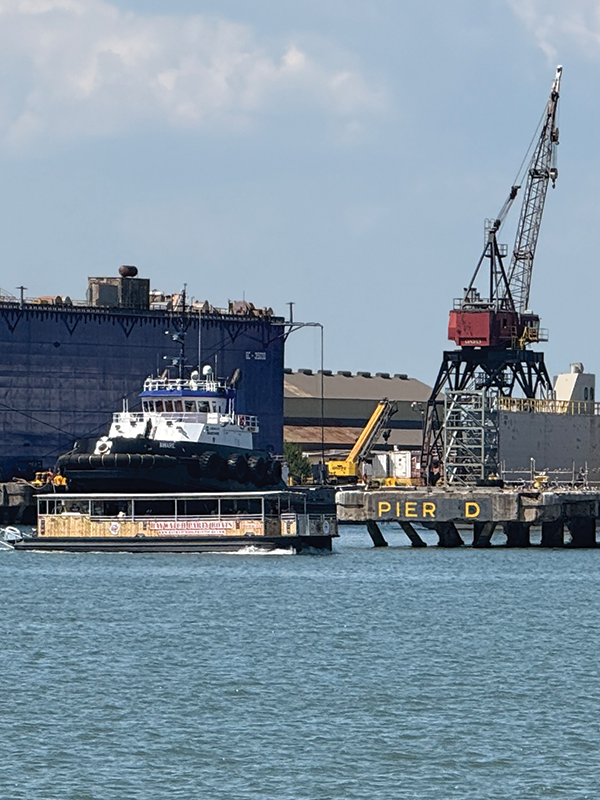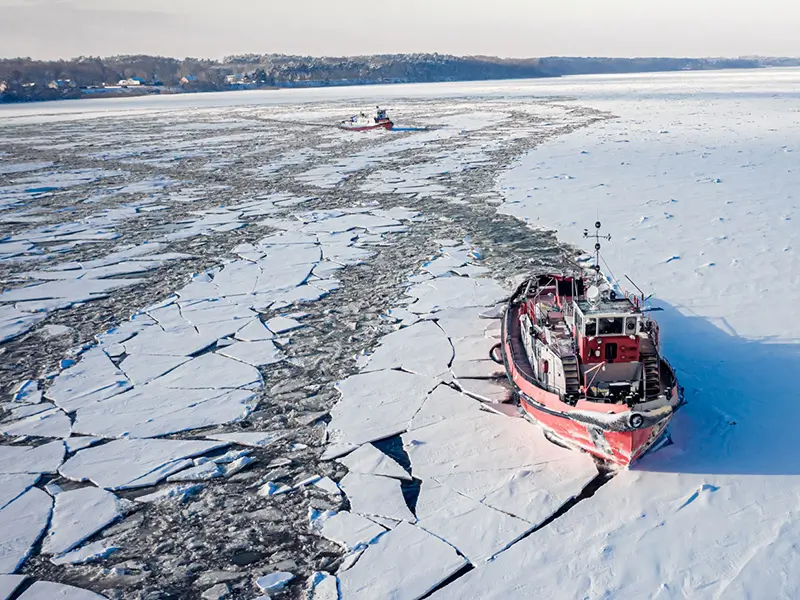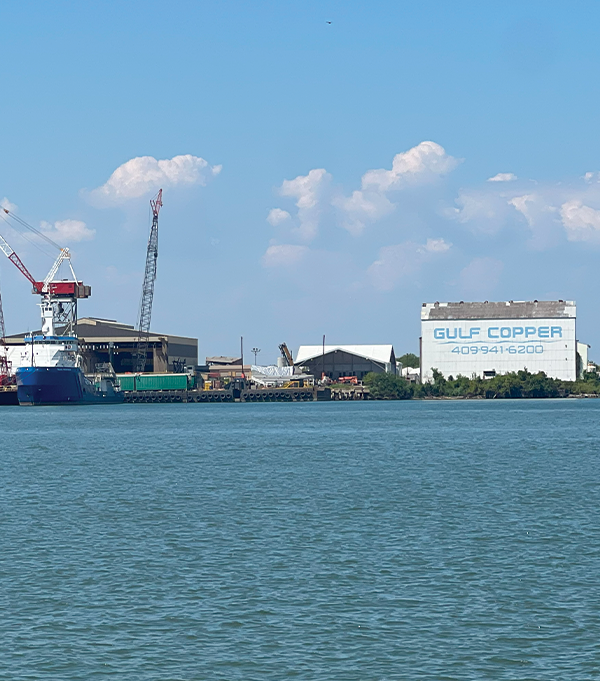Editorial by David Landriault
U.S.–Finland Icebreaker Pact Positions Galveston to Build a New Fleet—And a New Industry
“This isn’t just shipbuilding—it’s nation-building. And Galveston is now on the map.”
A White House agreement to procure 11 U.S. Coast Guard Arctic Security Cutters—four built in Finland and seven in the United States—puts Galveston on the map as a polar‑shipbuilding hub. The scope is national‑security big. The opportunity for the Island is bigger.

At a Glance
The White House and Finland have signed a memorandum to build 11 Arctic Security Cutters—four in Finland and seven in the U.S.—under a $6.1 billion plan. Three ships are slated for Davie’s new Galveston shipyard on Pelican Island. The initiative brings high-skill manufacturing, international expertise, and major economic potential to the Island, supported by local partners like Texas A&M University at Galveston and the Maritime Academy. With the groundwork now laid, Galveston has a chance to anchor a generational industry in advanced shipbuilding.
- Total: 11 ASCs (medium icebreakers)
- 4 in Finland; 7 in the U.S.
- Target: first cutter by 2028
- Est. cost: ~$6.1B
- U.S. yards named: Davie (Galveston) and Bollinger (Houma)
An 1839 Editorial: October 10, 2025
U.S.–Finland Icebreaker Pact Positions Galveston to Build a New Fleet—And a New Industry
What was announced
The White House and Finland signed a memorandum of understanding to acquire up to 11 Arctic Security Cutters (ASCs) for the U.S. Coast Guard. Under the plan, four will be built in Finland, with seven constructed in U.S. yards using Finnish designs and know‑how. The estimated program cost is about $6.1 billion, and the first delivery is targeted for 2028, according to officials cited by Reuters and other outlets. Source: Reuters
The administration also issued a Presidential Memorandum—a legal mechanism that explicitly authorizes construction of up to four cutters in foreign shipyards on national‑security grounds while directing the Coast Guard to phase production to the United States over time. Source: The White House
Financial Times, Reuters and maritime trades report that the U.S. work is slated for Davie in Galveston, Texas, and Bollinger Shipyards in Houma, Louisiana. Reuters’ on‑the‑record breakdown (attributed to a U.S. official) is three ships at Davie (Galveston) and four at Bollinger (Houma).

What it means for Galveston
1) A flagship industrial investment on Pelican Island.
Davie Defense has unveiled plans to transform Gulf Copper’s historic shipyard in Galveston into an “American Icebreaker Factory”—a $1 billion modernization aimed at building U.S. ASCs at speed and scale. The company says the project could support ~2,000 direct jobs at the yard and more than 7,000 jobs statewide, with an estimated $9 billion economic impact. (These are company projections.) The site is Gulf Copper’s 2920 Todd Rd. complex on Pelican Island, already an active heavy‑repair and drydock operation.
2) A natural workforce pipeline next door.
Galveston is home to Texas A&M University at Galveston and the Texas A&M Maritime Academy—one of just seven U.S. maritime academies and the only one on the Gulf. That proximity could become a strategic talent pipeline for marine engineering, naval architecture, and licensed deck/engine officers as advanced icebreaker work starts up. Source: Texas A&M University Galveston
3) Supply chain, skills, and technology transfer.
The program is deliberately structured to import Finnish expertise first, then on‑shore production. Design partners named by industry include Aker Arctic (Finland) and Seaspan (Canada)—firms with deep polar pedigrees—paired with Bollinger for U.S. construction. That cross‑border partnership is meant to accelerate know‑how transfer in hull form, ice‑class systems, and cold‑weather integration—capabilities that can anchor long‑term, high‑skill manufacturing in the region.
4) A broader geopolitical arc that favors Gulf Coast capacity.
The deal rides alongside the tri‑national ICE Pact (U.S.–Canada–Finland), a framework launched in 2024 to pool polar shipbuilding capacity. If Washington sustains priority on Arctic presence, follow‑on cutters, retrofits, and through‑life support could keep the Gulf Coast—and Galveston specifically—in the game for decades.

What’s firm—and what isn’t (yet)
- The international agreement and presidential directives are signed. The MOU and Presidential Memorandum are in place; the latter cites 14 U.S.C. §1151(b) and 10 U.S.C. §8679(b) to justify foreign construction as a national‑security necessity and directs the Coast Guard to plan the on‑shoring path.
- The U.S. yard split is publicly stated—but contract details can evolve. Reuters reports 3 Galveston / 4 Houma today. Separately, a Bollinger press release says a Bollinger‑led international team was selected to build six ASCs, with the first three coming via parallel early construction at Rauma (Finland) and Bollinger (U.S.) before shifting fully domestic—language that does not perfectly align with Reuters’ count. Expect clarification as contracting actions are published.
- Davie’s Galveston buildout is significant—but still proceeding through approvals. Davie’s acquisition of Gulf Copper assets in Galveston and Port Arthur and its yard transformation plan remain subject to financial, legal, regulatory and lease approvals, per WorkBoat’s reporting.
- Funding and oversight will shape the schedule. The Coast Guard has been evaluating ASC options within the FY25 budget and supplemental debates, and Congress will scrutinize costs and timelines, particularly alongside the Polar Security Cutter program.
Bottom line for Galveston right now:
The policy direction and intent are clear—Galveston is in the plan. Contracts, yard upgrades, and workforce ramp are the next gates. On the Island, the opportunity is to organize talent pipelines, supplier networks, and logistics now, so that when steel is ready to cut, Galveston can execute at scale.
The cutters themselves
Industry materials tied to the Bollinger‑led team point to a multi‑purpose icebreaker design from Seaspan + Aker Arctic. Reported performance goals include breaking ~4 feet of ice, 12,000‑nm range, and >60 days endurance, enabling missions from sovereignty patrol to SAR and research support in harsh conditions. (Final U.S. requirements will be set by the Coast Guard.)
Local readiness: a few practical considerations
- Pelican Island access and heavy logistics. The Island’s Gulf Copper yard is on Pelican Island, which saw a barge strike and temporary bridge closure in 2024; the bridge subsequently reopened with restrictions. As industrial activity grows, redundant and resilient access (roadway and waterside) will be critical.
- Workforce partnerships. TAMUG’s Maritime Academy and marine engineering programs are a ready partner for apprenticeships, credentials, and officer licensing aligned to shipbuilding and sustainment roles.
- Supplier base. Advanced ice‑class vessels demand specialized steel, propulsion, HVAC, coatings, sensors, and electronics that perform in extreme cold. Early vendor outreach will help anchor more of that value chain on the Gulf Coast.
Why this matters
For decades, the U.S. lagged in icebreaking while rivals built capacity. This pact shortens the timeline by pairing Finnish leadership in polar ships with American yards—and seeds a homegrown industry on the Gulf. If Galveston executes, the “American Icebreaker Factory” won’t be a one‑off project; it can become a signature capability for the Island, attracting follow‑on classes, retrofits, and high‑skill maritime careers for a generation.

David Landriault
Founder of The 1839
David Landriault serves as the Founder of The 1839 and Co-Founder of Falcontail Marketing & Design. Under his leadership, Falcontail has grown into a boutique firm known for collaborating with a diverse range of distinguished clients. The firm’s portfolio includes notable names such as Stanford University, the Galveston Economic Development Partnership, Sunflower Bakery & Cafe, and other esteemed organizations.


Join the Conversation
Galveston Pictures and Videos
Get Involved with The 1839
Sign Up for Our Newsletter